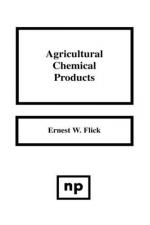|
This section contains 1,254 words (approx. 5 pages at 300 words per page) |

|
Modern agriculture depends quite heavily on the advances that have been made in science, and chemistry in particular, to maximize the yield of crops and animal products.Fertilizers, pesticides, and antibiotics play ever increasing roles in this field.
Fertilizers are perhaps the most widely used form of chemical in agriculture. Fertilizers are added to the soil in which crops are growing to provide nutrients required by the plants. Fertilizers can be divided into two categories: organic and inorganic. Organic fertilizers are derived from living systems and include animal manure, guano (bird or bat excrement), fish and bone meal, and compost. These organic fertilizers are decomposed by microorganisms in the soil to release their nutrients. These nutrients are then taken up by the plants. Inorganic or chemical fertilizers are less chemically complex and usually more highly concentrated. They can be formulated to provide the correct balance of...
|
This section contains 1,254 words (approx. 5 pages at 300 words per page) |

|


